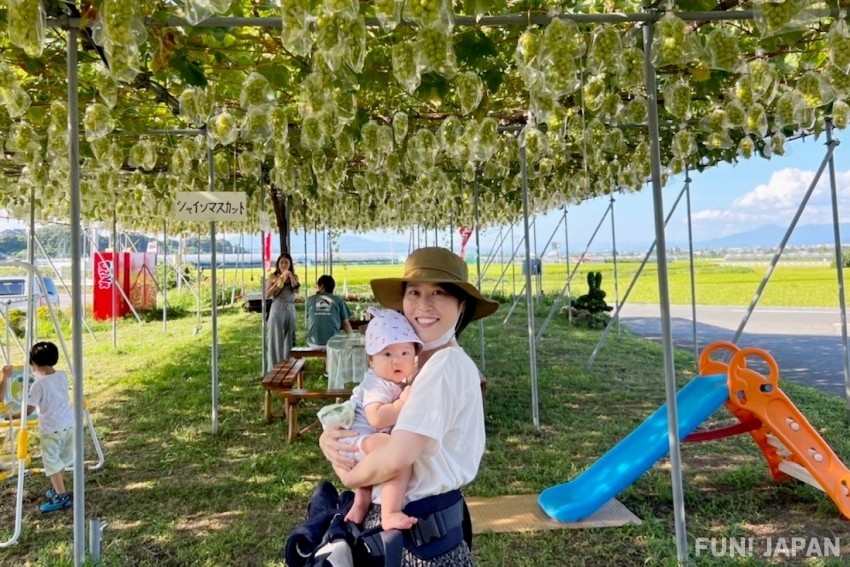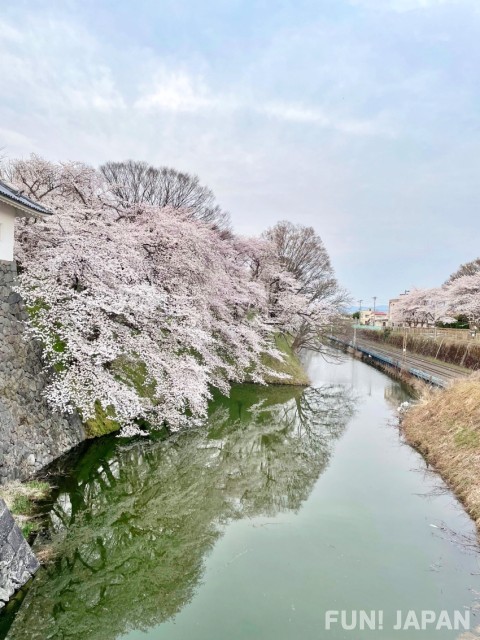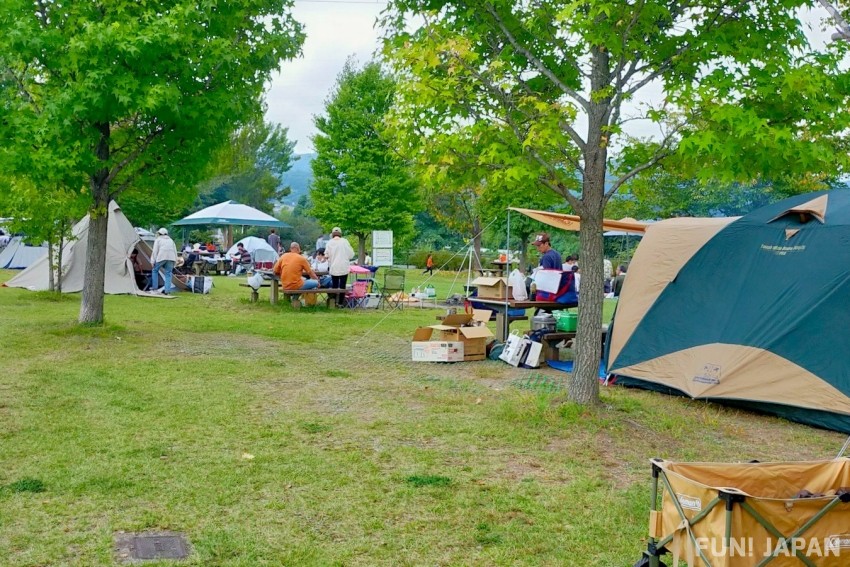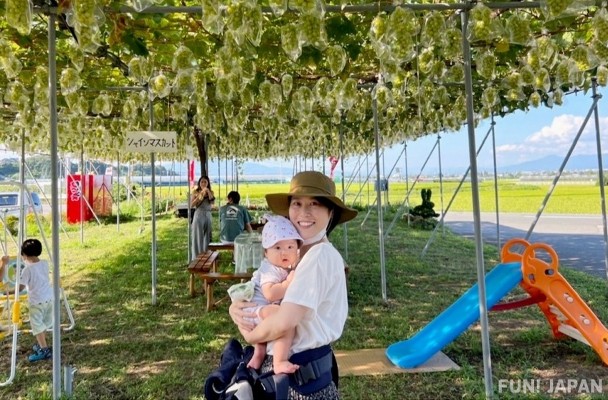
When it comes to Yamagata Prefecture, "Zao" is famous, and I'm sure those who love Japan have seen the mysterious photos of "frost-covered trees" at least once.
In addition to that, there are many charms that symbolize Yamagata, such as the specialty "cherries". However, according to Ms. Nishiuchi, who works at a travel agency, the charm of Yamagata is actually packed into "everyday life".
The charm of Yamagata Prefecture, which I felt for the first time after moving from outside the prefecture, is not only in its famous tourist spots, but also in the local spots in the neighborhood and the interaction with the local people. This time, I will introduce topics unique to local residents that make you want to have "friends in Yamagata" and "live in Yamagata".
Get to know the local life that you can't often see in tourist information magazines, and feel the unique charm of Yamagata.
Experience the daily life of locals at Kasumiga Castle Park, where the castle and cherry blossoms collaborate, and the rare mini Shinkansen in Japan

The Tohoku region has been a very popular tourist area for foreign tourists in recent years. Some people may have the image that it is a bit far away, but Yamagata Prefecture is relatively close to Tokyo and can be reached in as little as 2 hours and 40 minutes by Shinkansen. This time, I asked Ms. Nishiuchi of JTB Yamagata Branch, who has been living in Yamagata for 4 years, about the charm of Yamagata that he felt because she moved and lived there.
"Kasumiga Castle Park is a park developed from a castle site about a 5-minute walk from Yamagata Station. Kasumiga Castle Park is one of the representative tourist spots of Yamagata, but it is usually a relaxation spot for locals. There are two recommended points.
The first point is the seasonal scenery. In spring, the cherry blossoms around the castle walls bloom. In summer, you can enjoy the blue sky and flowers, in autumn, the autumn leaves, and in winter, the snowscapes. These are the four seasons of Japan. Also, the park has well-maintained promenades, and I often enjoy walking with my one-year-old child.
The second point is that you can see trains. Because it is close to JR Yamagata Station, a major railway hub, you can see trains and the Yamagata Shinkansen "Tsubasa" passing below from the bridge at the entrance to Kasumigaoka Park. The Yamagata Shinkansen is a rare type of Shinkansen in Japan that runs on the same tracks as regular trains, so it's worth noting. If you walk a little along the railway line, you can see the "Shinkansen crossing a railway crossing", which is rarely seen in Japan. If you get hungry while walking, stop by the nearby shop "Oyatsu-ya" and try the Yamagata specialty "Dondon-yaki". Each one is large and filling, so sharing is recommended. Both takeout and dine-in are OK.
And, while Yamagata Prefecture is strongly associated with cherry production, it is actually becoming a major grape-growing region. In particular, the Shine Muscat is attracting attention!
"Yamagata Prefecture is one of the leading fruit-producing regions in Japan. It is famous for being the number one producer of cherries in the country, but it also has a thriving grape industry. There are several direct sales outlets for grape producers in the suburbs of Yamagata City, and when the season comes, locals and people from neighboring prefectures flock to them for fresh and affordable grapes.
Among them, my favorite is 'Watanabe Orchard', whose roof of Shine Muscat grapes stands out conspicuously.
The sight of Shine Muscat grapes ripening under the blue sky is vivid, and it makes you want to take a commemorative photo. There are many types of grapes for sale, and you can get fresh grapes at a reasonable price."
- Kajo Park(霞城公園):https://maps.app.goo.gl/mQ3zCweCUi89M7Ng7
- Dondonyaki Oyatsuyasan(どんどん焼き おやつ屋さん):https://maps.app.goo.gl/nPYUt6Gbh9HxaaR99
- Watanabe Fruit Farm(渡辺果樹園):https://maps.app.goo.gl/FH1eBdC2GXzSrPf97
As a migrant, I want to recommend the taste of Yamagata!
Among the many Yamagata gourmet foods, what is the Yamagata specialty that Ms. Nishiuchi recommends?
"Nezugaseki is a fishing port town located on the border between Yamagata and Niigata prefectures. It is known to locals as a fishing spot, and as you drive along the coastline, you can see fishermen everywhere, buying bait at local fishing gear shops and enjoying fishing. Dried squid overnight is a gourmet food that can be enjoyed at the stalls in the Nezugaseki fishing port area. The squid, which has been dried overnight, is grilled and eaten with chili pepper and mayonnaise. The squid is large and thick, and the moment you put it in your mouth, the umami spreads and it is very delicious. After enjoying fishing in Nezugaseki, it is a standard routine for me to stop by the fishing port and eat dried squid. There are also hot spring resorts nearby, so it's okay to combine sightseeing. It takes about two hours by car (highway) from Yamagata City. I recommend sightseeing by car."
What is Ms. Nishiuchi's recommended souvenir?
"I recommend Fuki beans, a famous confectionery from Yamagata. Fuki beans are a simple sweet made by cooking peas and seasoning them only with sugar. There are several shops in Yamagata city that sell Fuki beans, but my recommendation is the Fuki beans from 'Yamadaya'. The first time I ate them, I was moved by the gentle sweetness that filled my mouth, and they disappeared in no time. Since the shelf life is only a few days, I recommend buying them towards the end of your trip to Yamagata. Please be aware that they may sell out quickly."
Also, 'Yonezawa beef' from Yamagata is nationally recognized as one of the top brand beefs.
"The meat in Yamagata is delicious, and indeed, there are many barbecue restaurants. My recommendation is 'Yakiniku Sakura'. There are also sukiyaki restaurants. Many people buy meat at the butcher's shop in the station and cook at home. Also, the supermarket 'Moz' where meat is cheap is a popular place for locals."
- Nezugaseki(鼠ヶ関):https://maps.app.goo.gl/cVrEbwgtEvd95pCE6
- Yamadaya Fukimame Honpo(山田家ふうき豆本舗):https://maps.app.goo.gl/yqn27cQHu27sCDNG6
- Yakiniku Sakura(焼肉さくら):https://maps.app.goo.gl/8FHcCA7GiothZ3rY8
Uncommonly known customs and culture of Yamagata residents
Ms. Nishiuchi shared with us the surprising customs and culture of Yamagata Prefecture, which she has come to appreciate through living there.
"Yamagata Prefecture is located in the Tohoku region of Japan, and most of the prefecture is designated as a special heavy snowfall area.
It is famous for its deep snow, but one of the things that surprised me when I came to Yamagata Prefecture was the heat of summer! Due to the geographical features, there can be severe heat close to 40 degrees in summer, which was unexpected."
"The people of Yamagata love their local hot springs. There are several public baths similar to super sentos, and they are genuine hot springs. Moreover, you can enjoy the hot springs at a reasonable price (one coin). I go about once every two weeks, but some people go two to three times a week. The one I often go to is Numaki Onsen Tsujiga Hana. It's close to my house, surrounded by fields, and the surrounding scenery is beautiful."
In addition, Yamagata Prefecture actually has the highest consumption of ramen in Japan (as of 2023). Yamagata ramen is characterized by a lot of soy sauce and red miso base. Yamagata is also famous for its soba shops, but there are soba shops that serve ramen, and some of them are said to be of high quality.
Every year from September to November, locals often hold a gathering called "Imonikai", where many people BBQ and eat potatoes by the river. This scene can be described as a symbol of Yamagata's autumn, without exaggeration.
Also, many people consider "Yamagata", "Fukushima", and "Sendai" as the same living area. There are even people who commute from Sendai to Yamagata. Some people jokingly say, "This is Yamagata district in Miyagi prefecture."
- Numagi Onsen Tsujigahana(沼木温泉 辻ヶ花):https://maps.app.goo.gl/wfQrYSBqUdvdZEtH7

What is normal for locals might be a bit surprising for newcomers.
Ms. Nishiuchi, originally from Ishigaki, Okinawa, lived in Tanegashima during her high school years. After becoming a working adult, she lived in Okinawa, Kumamoto, and now in Yamagata, experiencing various local cultures.
Moving from the warm southern islands to one of Japan's heaviest snowfall areas, she initially had some difficulties, such as not knowing the dialect and having to secretly ask her seniors for interpretation, or getting used to different driving habits. Now, she has gotten used to shoveling snow in winter and is enjoying her life in Yamagata.
I'm looking forward to hearing about Ms. Nishiuchi's new residence again♪

Comments